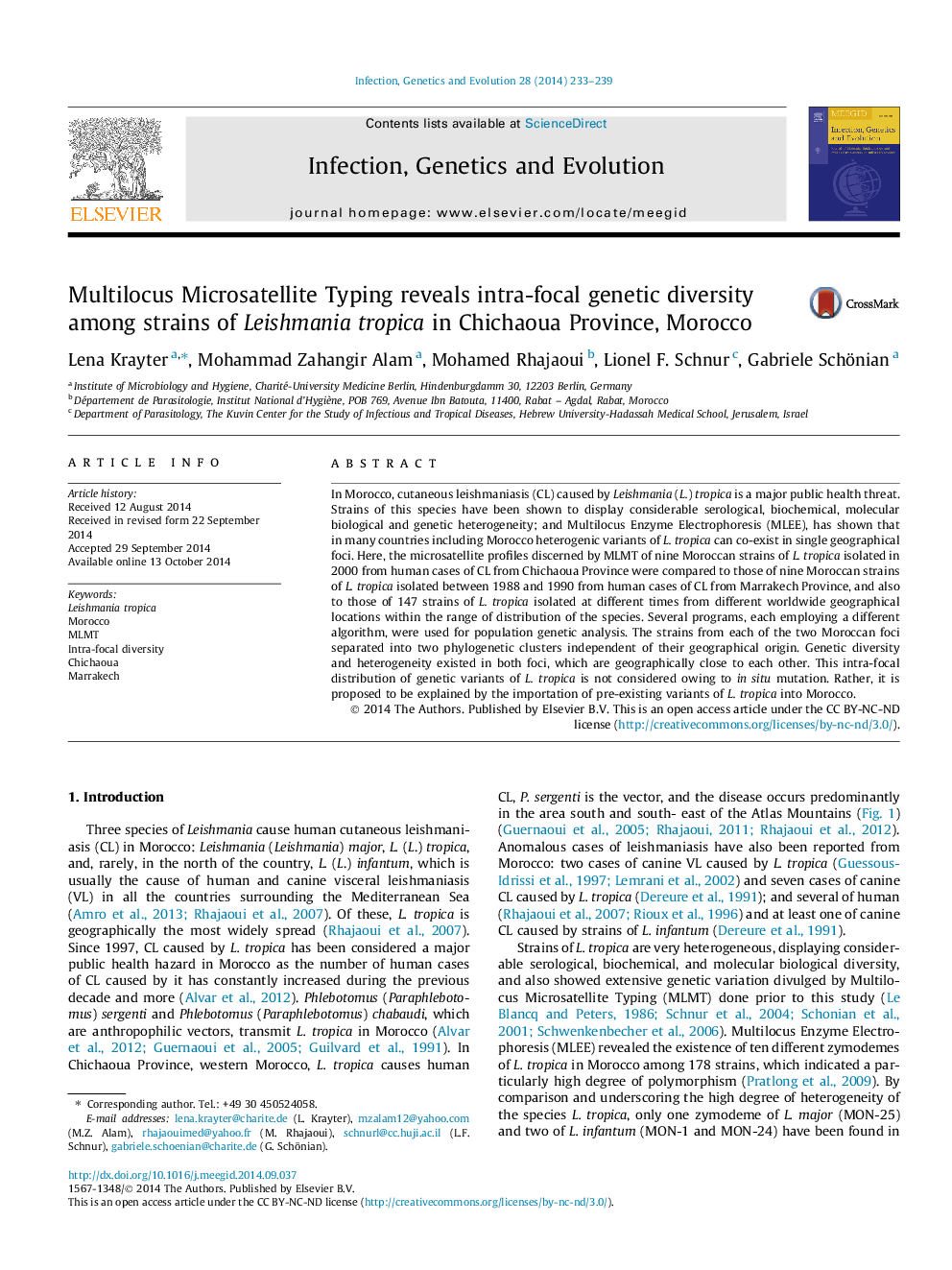| Article ID | Journal | Published Year | Pages | File Type |
|---|---|---|---|---|
| 5909430 | Infection, Genetics and Evolution | 2014 | 7 Pages |
Abstract
In Morocco, cutaneous leishmaniasis (CL) caused by Leishmania (L.) tropica is a major public health threat. Strains of this species have been shown to display considerable serological, biochemical, molecular biological and genetic heterogeneity; and Multilocus Enzyme Electrophoresis (MLEE), has shown that in many countries including Morocco heterogenic variants of L. tropica can co-exist in single geographical foci. Here, the microsatellite profiles discerned by MLMT of nine Moroccan strains of L. tropica isolated in 2000 from human cases of CL from Chichaoua Province were compared to those of nine Moroccan strains of L. tropica isolated between 1988 and 1990 from human cases of CL from Marrakech Province, and also to those of 147 strains of L. tropica isolated at different times from different worldwide geographical locations within the range of distribution of the species. Several programs, each employing a different algorithm, were used for population genetic analysis. The strains from each of the two Moroccan foci separated into two phylogenetic clusters independent of their geographical origin. Genetic diversity and heterogeneity existed in both foci, which are geographically close to each other. This intra-focal distribution of genetic variants of L. tropica is not considered owing to in situ mutation. Rather, it is proposed to be explained by the importation of pre-existing variants of L. tropica into Morocco.
Related Topics
Life Sciences
Agricultural and Biological Sciences
Ecology, Evolution, Behavior and Systematics
Authors
Lena Krayter, Mohammad Zahangir Alam, Mohamed Rhajaoui, Lionel F. Schnur, Gabriele Schönian,
